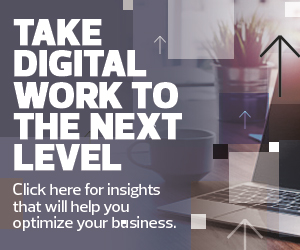Why IT Asset Management Is Vital to Successful Digital Work
The concept of digital work sounds relatively simple: Give employees laptops and send them home to do the same jobs they did in a corporate office. But for the IT teams tasked with procuring, maintaining and tracking company technology assets, digital work environments are often anything but straightforward.
This is where IT asset management (ITAM) becomes critical. Today’s workforces aren’t just remote; they can be distributed all over the world. Employees require a suite of IT hardware and software to foster productivity and protect the company from cybersecurity risks. Meanwhile, the bigger the employer and the more dispersed the workforce, the bigger the headache for IT teams.
In a 2022 Forrester study, 51 percent of businesses reported that lost laptops and other edge devices had compromised their security. “A comprehensive ITAM program will provide consistent views to all assets in the organization,” says Forrester analyst Carlos Casanova. “It reduces duplication of effort across the organization, which is not only costly but also causes confusion and increases security and operational risks.”

What Is ITAM and How Does It Work?
The first thing to understand about ITAM is that it’s more than just a single product or technology. “When the term IT asset management is used,” Casanova says, “it's often viewed in a narrow IT scope, which is mostly inventory management with some financial management component.”
In reality, however, ITAM is a holistic programmatic strategy that incorporates a range of technologies, policies and workflows to facilitate across-the-board management of all IT assets, including software, data and more.
By uniting the financial, inventory, contractual and risk management objectives attached to a company’s various IT assets, ITAM helps organizations to more efficiently and effectively manage the overall lifecycle of these assets and informs better tactical and strategic decision-making.
Click the banner below to learn best practices for creating a successful digital work experience.
ITAM Benefits Include Security and Cost Savings
A key thing to remember about an organization’s IT inventory is that each asset has its own unique lifecycle, including its intended use, costs and risks. Moreover, multiple departments might view a single IT asset through their own unique lenses. For example, Casanova notes, a CISO might view a company-issued laptop as a threat vector, while someone from finance might see it as an enterprise asset.
“This can all be happening simultaneously,” he says. “Moreover, they may, and likely do, track that asset independently, possibly with different identifiers.”
GET INSIGHT: Learn the core components that foster a positive digital work experience.
A solid ITAM strategy incorporates a comprehensive range of technologies and policies that, when combined, provide an overarching view of an organization’s technology assets, enabling IT teams to track them — including all of their purposes, costs and potential threats — across an entire lifecycle.

Carlos Casanova Principal Analyst, Forrester
In the process, ITAM solutions offer a wide range of uses and benefits, including:
- Cost control and visibility. Lost, stolen or broken assets cost businesses millions of dollars each year. Lacking an effective ITAM solution, the likelihood of those losses significantly increases. “ITAM provides a basis for faster response to day-to-day incidents,” Casanova says. “Understanding what device an individual has, what’s on it, and what they’re supposed to be connected to are all vital to ensure that a remote workforce can function efficiently and effectively.”
- Software compliance. Whether by enforcing security updates or by tracking license usage, ITAM enables companies to mitigate security risk and improve asset maintenance through routine and automated monitoring.
- Better onboarding of new hires. By implementing efficient ITAM, companies can streamline and automate their employee onboarding processes, a particularly critical function in an increasingly remote and hybrid workforce.
- Security. With a high-quality ITAM strategy, companies can more thoroughly and efficiently inventory and track their IT assets, including any unaddressed patches or security vulnerabilities.
“Sadly, there are many organizations that have hundreds of corporate devices that are unaccounted for,” Casanova says. “ITAM is charged with ensuring that data on the device is wiped before disposal and, if necessary, shredded. These are all core to the process and corporate risk mitigation strategy.”











